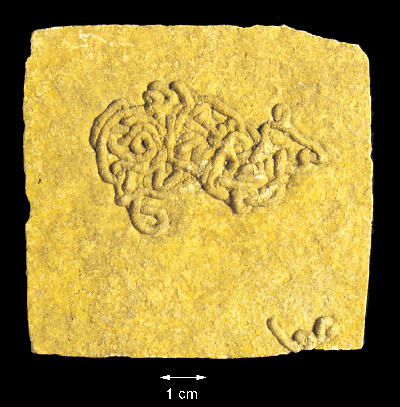 Piecing Together the Past
Piecing Together the Past
Reconstructing the Past with Fossils

Illinois State Museum Collection
One of the many pieces going into the reconstruction of a past ecosystem
Fossils from upland environments are rare. Most organic material from the uplands decayed without a trace because sediment needed to bury and preserve organisms rarely accumulated in these areas. So, where did we find the evidence to reconstruct this forest?
The bedrock here is limestone that formed in the Devonian Period. Swift-flowing water cut a river channel into the rock. As sea levels rose, the flow of water slowed and mud built up in the channel. Organic materials that fell or were washed into the channel were buried. The buried channel with its upland forest fossils was uncovered at the Allied Quarry in Milan. This locality is one of only a few in the world where upland plant and animal fossils from this time period have been found.
Unanswered Questions
Fossils are often just bits and pieces of the whole. Though we have many
Lesleya and
Megalopteris leaf fossils, we don't know much about the plants
they came from. We are
not
even certain they are from separate plants. One clue
that suggests the leaves come from different plants is that Megalopteris fossils
are not always found with Lesleya fossils.
It's Tough to Find a Fossil!
Fossils are generally found in rocks from the time period when the organism
lived. No rock from that period usually means no fossils will be found. Click on the Fossil Gallery icon to view pseudofossils versus real fossils.